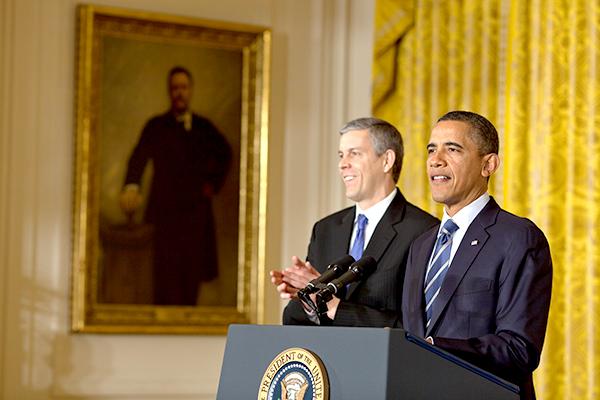Public education serves a vital role in a country’s culture by preparing children for the future, and educational reform is difficult with a highly diverse population. The No Child Left Behind Act (NCLB), signed into law by President George W. Bush, in 2001, has become the greatest limiter of student potential and interest in learning.

On Oct. 24, 2015, the New York Times article “Obama Administration Calls for Limits on Testing in Schools” by Kate Zernike reported that the Obama administration “called for a cap on assessment so that no child would spend more than two percent of classroom instruction time taking tests.”
While most educators agree that the standardized testing implemented by NCLB has not substantially improved education, they also agree that some sort of testing is still necessary.
“The fixation on high-stakes testing hasn’t moved the needle on student achievement,” Randi Weingarten, president of the American Federation of Teachers said. The White House website states, “NCLB has created incentives for states to lower their standards; emphasized punishing failure over rewarding success; focused on absolute scores, rather than recognizing growth and progress; and prescribed a pass-fail, one-size-fits-all series of interventions for schools that miss their goals.”
This current version of the Elementary and Secondary Education Act (ESEA) has severe consequences on educational systems, especially with the socio-economic stratification between districts. The Education Policy Analysis Archives states that numerous factors skew the percentages used to determine annual yearly progress (AYP) and “found through logistic regression analyses that additional testing opportunities benefited specific majority student subgroups.”
The teacher-expectancy effect influences student growth so students in low-track courses do not receive the same challenges or opportunities as students in the higher tracks.
This inhibits learning, especially if students do not have the resources to access meaningful opportunities outside of the public education system.
“The effects of sorting are clear when it comes to race and socioe-conomic status. Study after study has shown that in schools, as in districts with diverse student populations, tracking results in racial stratification and lower achievement in low-track classes,” Carol Burris wrote in “On the Same Track: How Schools Can Join the Twenty-First Century Struggle Against Resegregation.”
Despite the lack of statistical evidence to support the current educational structure, Congress has yet to make any notable efforts to improve the system.
Current public education focuses on teaching children to regurgitate information, lacking concern whether the information is retained or
practical.
Zernike mentioned a survey from the Council of the Great City Schools that “set out to determine exactly how much testing is happening among its
members.”
This survey reported that students in big-city schools take an average of 112 mandatory standardized tests between prekindergarten and high school graduation, or eight tests a year.
In higher grades, testing consumes 2.3 percent of school time, which makes the official announcement by the Obama administration a bit lackluster. Congressional inaction prevents serious reform, and the administration offers flexibility within the law only if states agree to adhere to rigorous reform policies.
The conflict between Congress and President Barack Obama’s administration does not alleviate stress for educators as they juggle new policies within old
boundaries.
Scores are not determined by knowledge or intelligence
factors alone.
Education should cultivate self-awareness and critical thought, not classify people based on numbers. One-size will never fit all, and tweaking a broken system will not fix it.



























